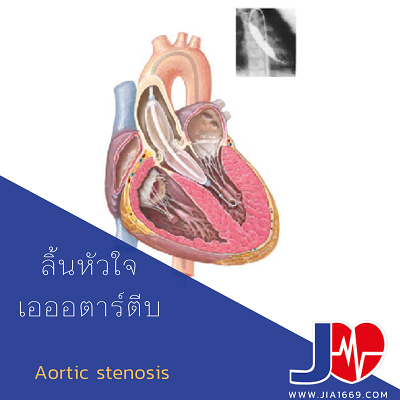AORTIC STENOSIS
Last updated: 6 Aug 2024 | 2536 Views |


![]()
AORTIC STENOSIS
Aortic valve stenosis (AVS) is a disorder in which the opening of the aortic valve in the heart is too small or stiff. A valve is like a doorway, and the aortic valve is one of four valves controlling
blood fl ow inside the heart. A normal aortic valve has three fl aps (leafl ets). The heart sends oxygen rich blood to the body through this valve. In AVS, the heart works harder to pump
blood through the smaller opening. This extra effort can make the heart grow big and weak.
AVS occurs about three times more often in men than in women.
cause
Calcium and cholesterol deposits on the valve that occur with aging are the most common cause. Some people are born with damaged valves or have a two-sided (bicuspid), not three-sided, valve. Heart disease or rheumatic fever from childhood infections may also damage the valve.
symptom
Most people at fi rst have no symptoms. If the valve narrows enough, feeling tired, fainting with exercise, having chest pain with exercise or at rest, or having symptoms of left-sided heart failure (e.g., shortness of breath) may occur. Breathing problems during exercise may progress to problems at rest, or waking up at night unable to breathe.
diagnosis
The doctor will take a medical history and do a physical examination. The doctor may hear a heart murmur (an extra or unusual sound of blood fl ow through the valve during the
heartbeat). If AVS is suspected, the doctor will order echocardiography (using sound waves to take heart pictures) to diagnose AVS. Additional tests such as heart catheterization (using x-rays and dye) may be done before surgery to replace the valve in order to estimate how severe the aortic stenosis is.
treatment
People without symptoms and with mild stenosis may not need treatment but should be monitored on a periodic basis by their doctor. For people with symptoms or severe disease, surgery to replace the valve is best. Sometimes, a special balloon is put in the valve and blown
up so the valve stretches (valvuloplasty). Valvuloplasty is often used in younger people who will get a replacement valve after they grow.
Things to do
![]() Do ask your doctor if you can exercise.
Do ask your doctor if you can exercise.![]() Do stop smoking.
Do stop smoking.![]() Do start a low-salt diet and lose weight if you have
Do start a low-salt diet and lose weight if you have
congestive heart failure.![]() Do call your doctor if, after you get a new valve, you have
Do call your doctor if, after you get a new valve, you have
chest pain, shortness of breath, palpitations or rapid heartbeat,
fainting, sudden weakness in an arm or leg, eyesight
problems, fever, or blood from the surgery site.
don't do
![]() DON’T become dehydrated. Dehydration will worsen
DON’T become dehydrated. Dehydration will worsen
aortic stenosis.![]() DON’Tuse any over-the-counter medicine without
DON’Tuse any over-the-counter medicine without
asking your doctor.
Related content
Dysfunctional Uterine Bleeding
24 Apr 2023
Cavernous Sinus Thrombosis
19 Jul 2023
Hypoglycemia
18 May 2023
Syncope
21 Sep 2022










